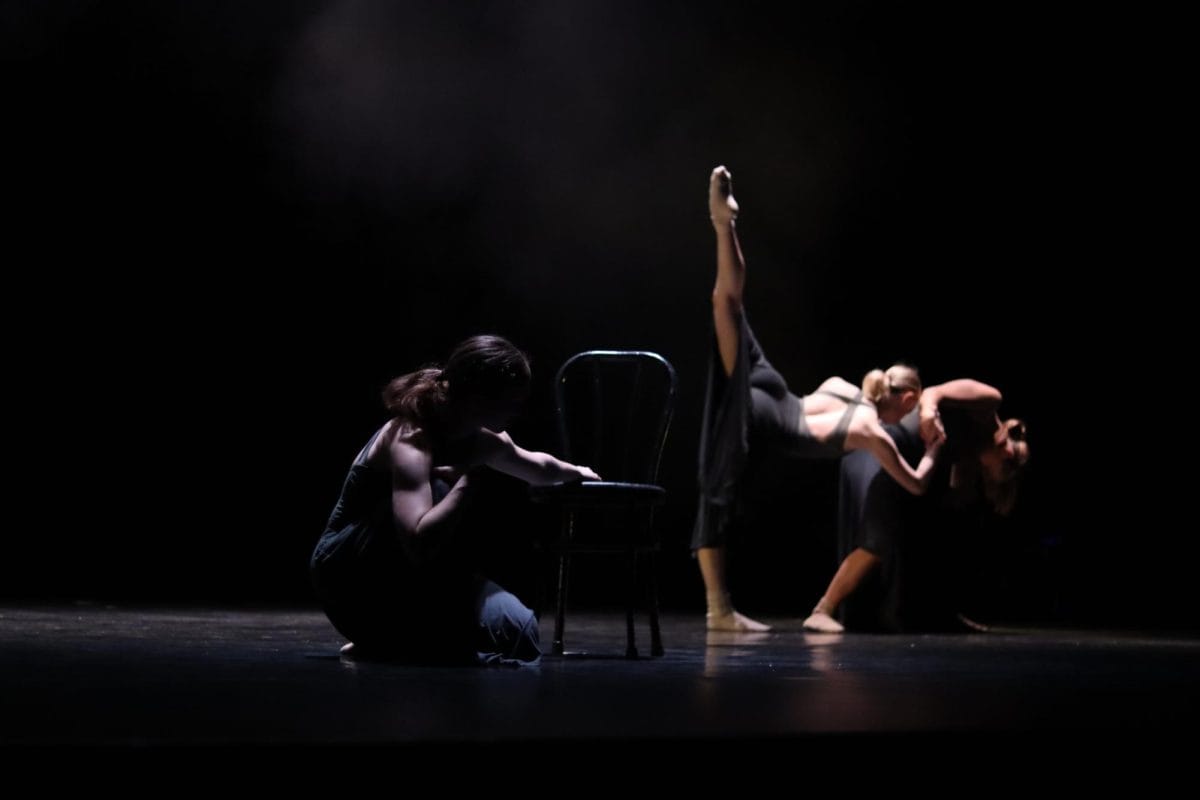The Southern Letterpress sits nestled between Anders Hardware and Faucett’s Ladies Clothing in downtown Northport. The studio resembles a long, narrow hallway more than a shop and stands with its door open to passers-by on a quiet, rainy Saturday morning. The pitter-pattering of the rain blends with the methodical hissing of the printing press, and ink that smells like frying bacon wafts through the room. The walls are covered with colorful prints of popular Southern sayings and greeting cards.
It is a soothing place and, despite cooler fall temperatures, feels warm.
Jessica Peterson scrapes the ink she mixed from a flat plastic dish and spreads it across the undulating rolling pins, disrupting the systematic hissing and producing a momentary sound comparable to an angry, spitting cat. The pins quickly turn a shade of deep purple as the ink disperses across them. She takes a piece of thick paper and lines it up, ready to enter the press. Her foot presses the pedal, raising the clamps that will hold the paper in place as it is pulled through. She turns the handle and, for a moment, it sounds like a freight train flattening a coin as ink is pressed to paper.
“It is a good stress reliever,” Peterson said, holding up the paper that now is impressed with purple keys, the beginning of a background for a poster advertising an upcoming concert at the Bama Theatre.
Peterson traded in her New York life for a new start in Alabama pursuing printmaking and book arts in 2006. Seven years later, she is still living in the South and now co-owns The Southern Letterpress with Bridget Elmer and teaches on campus in the Honors College and department of art. Though she has yet to develop a Southern accent, she has now found a home in the South and does not plan to leave. At 30 years old, Peterson did not expect life to take her so far south of the Mason-Dixon Line.
After graduating from the School of the Arts Institute in Chicago, Peterson lived what she calls an “adult life” in New York City before moving south to pursue graduate school studying the art she always knew she wanted to do. She lived in Coney Island for a while and worked several eccentric jobs she knew she would not keep before finding something more in line with her passions.
“In the Northeast, or at least in my family, it was expected that you were supposed to leave home and sort of go throw yourself into a crazy experience,” Peterson said.
Peterson, who was born and raised in Rochester, N.Y., moved to New York City and heaved herself into the world after art school. She worked for a company that sold only file folders, a museum of ancient Egyptian antiquities, one of the last Howard Johnson’s restaurants in Time Square, and a hip hop bar in New York before moving to Brooklyn and finding a job in print production with an advertising company in Manhattan, N.Y.
“It took a lot of searching to find that,” she said. “Even though it was all sort of indirect, I think everyone should have to have that experience because you really learn a lot about yourself and what you want to do. I got to a place where I was like, ‘This is what I want to do,’ and I was willing to make sacrifices for it.”
After realizing she wanted to pursue a master’s degree in book arts and print making, Peterson began to look for schools. Alabama was one of the only schools that offered a master’s degree in book arts, so Peterson packed her bags and headed south.
After graduation, she moved to Gordo, Ala., a small town with a population of about 1,200 people, where she lived with and worked alongside Amos Kennedy, another well-known printmaker. They lived under the care of husband and wife artists Glenn House and Kathy Fetters.
“My wife and I established, for a while, adequate living quarters for three energetic and talented individuals we commonly referred to as artists-in-residence,” House said.
Peterson referred to House’s artists-in-residence as his “collection of printers.”
“First, he collected Amos Paul Kennedy and then he was like, ‘You can move to Gordo as well, and I’ll collect you too,’” Peterson said.
Kennedy and Peterson lived in a building together, and though they did not know one another well before then, Peterson said that was an influential time for her as she was able to learn from Kennedy. The fact that he had given up his corporate America job to pursue his art was inspirational to Peterson, who was doing just that, only 20 years later.
“He would say, ‘You just gotta put ink on paper, baby,’” Peterson said. “And I was like OK, ‘You’re crazy, but OK.’ He was right, though. He also said, ‘Your printing press is never gonna leave you.’ I was like, ‘You’re right, because it weighs like 800 pounds.’”
After undergoing a divorce, Peterson found herself rediscovering an old dream.
“I just felt like, ‘What is going to happen to my life?’” she said. “I knew I wanted to have a print shop, and I had been writing about it and thinking about it for three years.”
She knew the man who ran the newspaper in Columbus, Miss., through friends in Gordo, Ala. One day, Peterson called asking him if he knew of a place in Columbus, Miss., where she could open a print shop.
“I had no idea how it was going to happen but he said I could have a space in the newspaper office for a year for free,” she said. “That was one of the best things that ever happened to me because someone took a risk on me and could see that I was really invested.”
In 2011, Peterson moved to Columbus, Miss., to follow her dream and open The Southern Letterpress. A year later, she moved back to Tuscaloosa at the prompting of Steve Miller, director of the UA book arts program at the time, bringing The Southern Letterpress with her and adding a new long-distance business partner. She returned to teach at the University and opened The Southern Letterpress on Sept. 6, 2012, in Northport, where the shop currently resides.
Bridget Elmer joined Peterson in co-owning The Southern Letterpress later that fall. She had been a friend of Peterson’s since she came to visit the UA campus as a prospective graduate student. Elmer moved to Asheville, N.C, to teach after graduating with her MFA in book arts. She remained in touch with Peterson, and when Elmer and her husband moved to Florida, she and Peterson began discussing a partnership.
“We started talking about joining forces, as we both loved the idea of working together and supporting each other officially in a shared business,” Elmer said. “Soon after, we decided that I would join Jessica as co-owner of The Southern Letterpress.”
Elmer worked from home during the first year of their new endeavor, printing from a spare room. Now she and her husband have a studio, and The Southern Letterpress, LLC, is officially incorporated.
Peterson said she plans to stay in the South because she fell in love with the way Southerners tell stories and their sense of humor. The people and community she has found compel her to stay at her small print shop in Northport.
“I was surprised by this because I thought I was kind of an introverted person, but I really love having people come in and getting to talk to them,” she said.
The Southern Letterpress participates in Art Night, which takes place on the first Thursday of every month in downtown Northport from 5-9 p.m. Visitors have the opportunity to print their own broadside to take home with them. Through Art Night, Peterson said she has enjoyed introducing new people to printmaking and to a different aspect of the art community that seems largely underground to her.
“I think that even though the art community is really kind of under the radar and small here, it is really important,” she said. “An art community is necessary to have a vital city. When people come in here and get to do something with their hands and take it home with them, it makes them really excited and validated, and I guess that is what art is supposed to do. It’s supposed to be a process of making and validating.”






